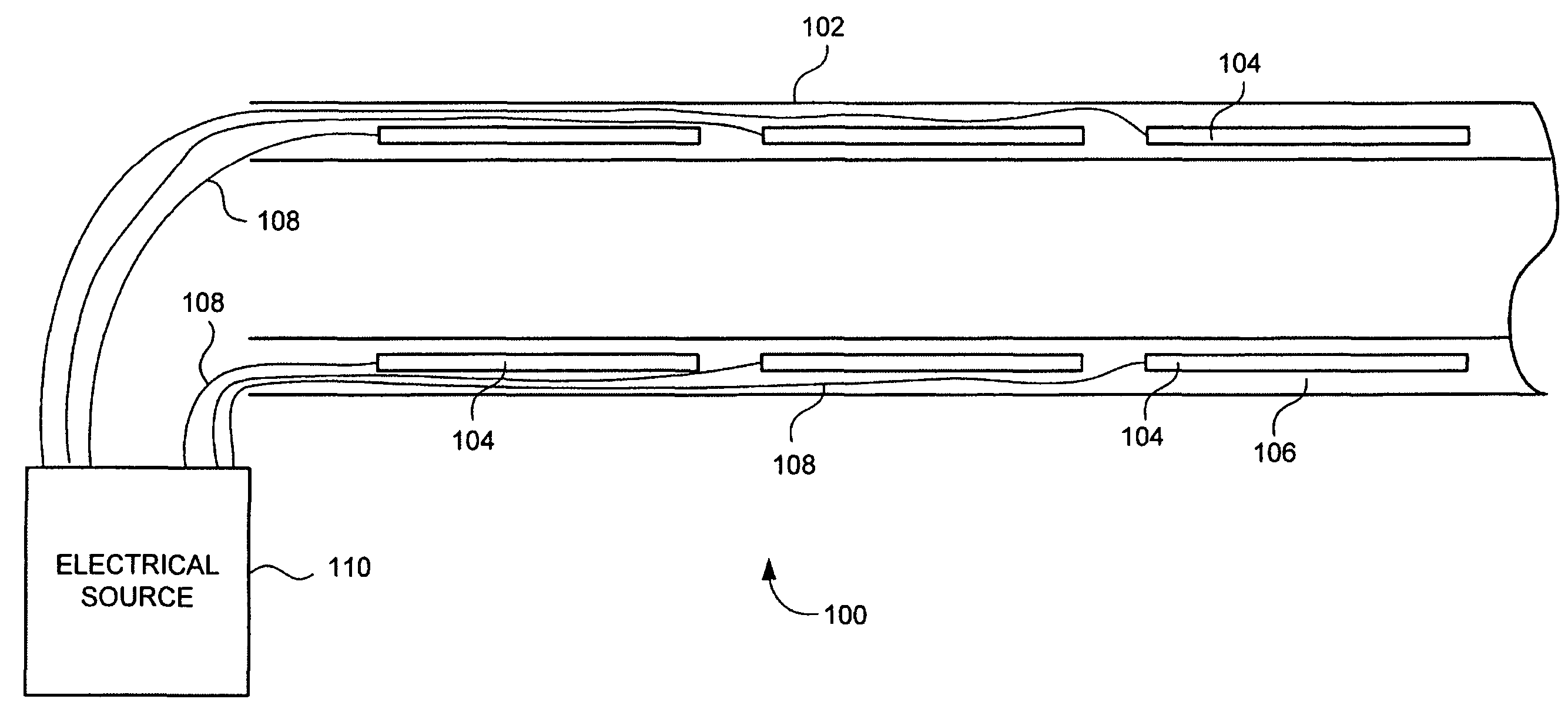Variable shaft flexibility in endoscope
a flexible, endoscope technology, applied in the field of endoscopes, can solve the problems of limited flexibility and control of known endoscopes, high undesirable interference with internal organs, and difficultness, and achieve the effect of reducing its “flexibility
- Summary
- Abstract
- Description
- Claims
- Application Information
AI Technical Summary
Benefits of technology
Problems solved by technology
Method used
Image
Examples
Embodiment Construction
[0025]Referring now to the drawings, wherein like reference numerals designate corresponding structure throughout the views.
[0026]FIG. 1 is an illustration of a portion of a shaft 102 of flexible endoscope 100. The shaft 102 is shown as a sectional view including elongated segments 104, which are positioned within an outer layer 106 of the shaft 102.
[0027]Also illustrated in FIG. 1 are electrical conductors 108, which are individually electrically connected to the various elongated segments 104. The electrical conductors 108 generally extend from their respective elongated segment 104, through the outer layer 106 and are electrically coupled to an electrical source 110.
[0028]The elongated segments 104 are provided as, for example, a fibrous ionic polymeric material (or similar material), which changes in physical characteristics (such as length and rigidity) in response to a stimulus. In this case, the stimulus is an applied electrical current. In this manner, the applied electrical...
PUM
 Login to View More
Login to View More Abstract
Description
Claims
Application Information
 Login to View More
Login to View More - R&D
- Intellectual Property
- Life Sciences
- Materials
- Tech Scout
- Unparalleled Data Quality
- Higher Quality Content
- 60% Fewer Hallucinations
Browse by: Latest US Patents, China's latest patents, Technical Efficacy Thesaurus, Application Domain, Technology Topic, Popular Technical Reports.
© 2025 PatSnap. All rights reserved.Legal|Privacy policy|Modern Slavery Act Transparency Statement|Sitemap|About US| Contact US: help@patsnap.com



